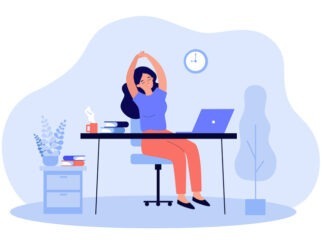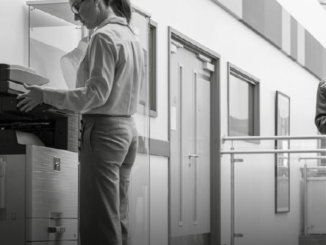We speak to Mark Osborne, director of ICT and infrastructure at Northern Education Trust, about the safeguarding technology that won the trust a BETT award, and how technology has transformed the trust’s outcomes
Tell us a bit about your trust, and your role there.
We’re a large multi-academy trust made up of 21 academies – 11 secondaries and 10 primaries. The academies are located quite widely across the north of England; we’ve got academies that stretch from Bolton, across through Halifax and Keighley, across to Barnsley and then up through Stockton, Redcar, Cleveland and some in Newcastle and all the way up to Blythe and Northumberland. We currently have 13,000 students and almost 2,000 members of staff, so we’ll probably be one of the largest multi-academy trusts in the north of England. I’m director of ICT infrastructure, so I’m responsible for IT and educational technology across the trust and all the academies as well.
Why do you think it’s important to use technology in education?
We have tried to empower both students and teachers to take full advantage of the opportunities offered by technology, from improving safeguarding to being an enabler of transformation. Ultimately, it’s to improve outcomes for the children and young people in our trust. I think all too often in the past IT has been seen as a barrier; we very much see it as a tool to improve things.
You mentioned using technology to improve safeguarding. What did this entail?
We implemented a trust-wide digital monitoring system to help safeguard our students online. We were one of the earliest adopters of a technology called Smoothwall Monitor, and have partnered closely with Smoothwall to develop the system to ensure all of the children in our trust stay safe online. So, we have a lot of accountability and responsibility when it comes to online safeguarding. We are very keen, and always go above being compliant with children’s safety in education so, for us, it’s been really successful and it’s been a huge change for the trust. The implementation of the system resulted in us winning a BETT award.
How did you implement the system?
I guess one of the advantages for us is that we’re quite a large, successful, multi-academy trust – which means we’ve got quite a lot of resource centrally to be able to implement a trust-wide solution that probably would otherwise have been out of reach for some of our smaller academies. I joined the trust late in December 2017, shortly after the new CEO was appointed. The new CEO had started a phase of rapid transformation across the trust, and when I came in – there were a lot of IT managed services. The schools were acting autonomously; some schools had one managed service with certain systems, and others were run by an IT manager with different systems. So, it was very clear from the start that we needed to consolidate all that and have one, trust-wide, system that give us oversight of what was going on in terms of online safety across the trust.
This then led us to working quite closely with the online Safer Internet Centre and Smoothwall, to explore what was out there. At the time, in early 2018, they’d just appointed a new CO, a gentleman called Georg Ell, which was quite fortuitous to us because they were developing that product quite heavily. So, we managed to get in at a time with them where we could influence the development of the product as well; the system we were getting was heavily influenced by what we wanted as a large, multi-academy trust, and I guess that’s where it all started.
So, how does the technology work in action?
The technology itself sits on all devices across the trust no matter whose device it is, whether that be a trustee, a governor, the CEO, a teacher or a student. The software application sits on every device and, basically, monitors usage, keystrokes, what the child is searching for – and then, if it picks anything up, it will take a screenshot of what’s going on and report that centrally.
There is also a human safeguarding team that filters out all the false positives as well, so we’re seeing exactly what we need to see at that point. If it’s what we call a ’category five alert’ – which is a more serious alert – someone will pick up the ‘phone to the principle. For example, you might find something’s happening in a classroom and, before the student leaves the classroom, they’ll be met by a member of staff. If you’ve got something going on with a student you can build up their profile as you can see what’s happened historically, so if you need to evidence more intervention then you can.
What did winning the BETT award for implementing this technology mean to you?
It was amazing. I guess it gave all of the team at the trust the recognition that I think people deserved for all the hard work they’d put in. It was a massive project, as you can imagine – over 21 academies and 14000 – 15000 users; it just gave us that recognition that, actually, we’re making an impact. It was really good because the morning after the award ceremony I was invited to meet Lord Agnew, who was the academies minister at the time, and he personally congratulated us on the award, but was also really complementary around what the trust had done as a whole in terms of school improvement.
We had moved from a trust that was really struggling to a trust where all the primary schools are good or outstanding; we’ve also got some of the highest performing and most improved secondary schools in the country, and it’s just really good to get that sort of feedback from someone who was the minister in charge of academies at the time. I guess it’s just testimony to the hard work that everyone’s put in across the trust, not just with technology.
How would you say using technology impacts your trust on a day-to-day basis?
Technology has very much become an enabler of transformation, rather than something that’s constraining school improvement. We use technology to help us enable transformation, help us with school improvement, improving outcomes for students whether that be through safeguarding or the delivery of online lessons, etc.
What do you think is the biggest barrier to other schools using technology to the level that your trust has?
I think for a lot of smaller or standalone schools it’s been a financial barrier – the ability to be able to afford the specialist IT staff or specialist IT leaders that they need to improve their IT infrastructure, or staff to support them to make better use of technology. For us in our trust we use curriculum-led financial planning, so the finances are led by the curriculum; this means that those barriers are removed for us.
Generally speaking across the sector, in my opinion, one of the biggest barriers is probably the quality of leadership management, whether that be in a single academy or school, or a full academy trust. If you’ve got leadership management that’s good or outstanding you usually have the support of the exec team, the trustees and the governors or whoever it might be. If you’ve got that support, and that outstanding leadership ,then I don’t see any reason why you can’t successfully use technology to a greater level. However, if you don’t have that support it often acts as a barrier. If leadership is bad in one area it usually affects all areas, including education technology.
What advice would you give to other schools or trusts which might be reading this and thinking that this is something they might want to do?
It’s to always make sure that, whatever you’re doing, it’s linked to improving the outcomes or welfare of students. Don’t just do it for the sake of doing, and don’t just do it because the school next-door are doing it; it has to be something that is going to have a tangible impact on the outcomes of the students in that school or trust.
Get the educationalists involved. I’m a director of IT but I’m not a teacher – I’m not an educationalist as such. Get the specialists involved and, again, its part of our wider vision, but make sure that decision-making is drive entirely by what’s best for the students. As I said before, our development is always curriculum-led, and that’s one of the main reasons why, in my opinion, we’re so successful.
Due to the pandemic the use of edtech and technology for education has grown more than ever. What other technologies have you implemented in the last year?
It’s obviously been a bit of a whirlwind! In terms of technology we’ve added over 5,000 extra student laptops, all of which we used during lockdown; every single digitally vulnerable student, and every vulnerable student, has access to as device now. We invested heavily in new wifi infrastructure for when those devices came back – we’ve increased the bandwidth and connectivity in the schools ten-fold. We’ve incorporated Google Classroom even more into the curriculum, especially in the primary phase. We’ve obviously now got our remote learning offer as well, which has been really successful. There’s been a lot of change in a very short space of time.
How do you think that technology can aid in the catch up of pupils?
The pandemic has shown us all how flexible and versatile technology can be. In our remote learning I thought it was unbelievable; it was really successful in uptake, and the levels of engagement far exceeded my expectations. It was unbelievable! To give you an example, we have online masterclasses now which are catch-up sessions for students across the trust. We use technology to deliver these masterclasses, which are run by subject specialists. We have directors of subjects that, historically, wouldn’t have been able to put themselves in 11 secondary schools at once but now, through technology, we can.
We have 100, 200, 250 students coming along, voluntarily, to these online masterclass catch-up sessions, to sit with a maths expert, or a humanities expert – and that’s regardless of geography – and we’re already starting to see a positive impact. So, if we have more initiatives like this, where we can utilise technology, and try to get more subject specialists in front of those students, then it can only be a positive thing.
I’m sure we will see a lot more of that, moving forward.
COVID quickfire:
Biggest challenge: we moved 15,000 students overnight to remote learning; that was a massive challenge.
Biggest achievement: bridging the digital divide – making sure that all of our vulnerable students, digitally vulnerable or not, have access to a device.
Biggest surprise: how quickly everyone embraced the use of technology during the lockdown. It’s usually very hard to achieve change, especially in IT; it can be difficult or not well-received. I guess the biggest surprise was just how quickly everyone embraced it. It was unbelievable.
Biggest lesson learnt: probably how COVID created opportunities, especially in relation to education technology. It’s a lesson learnt for me that we don’t underestimate how opportunities can come from adversity.



Be the first to comment